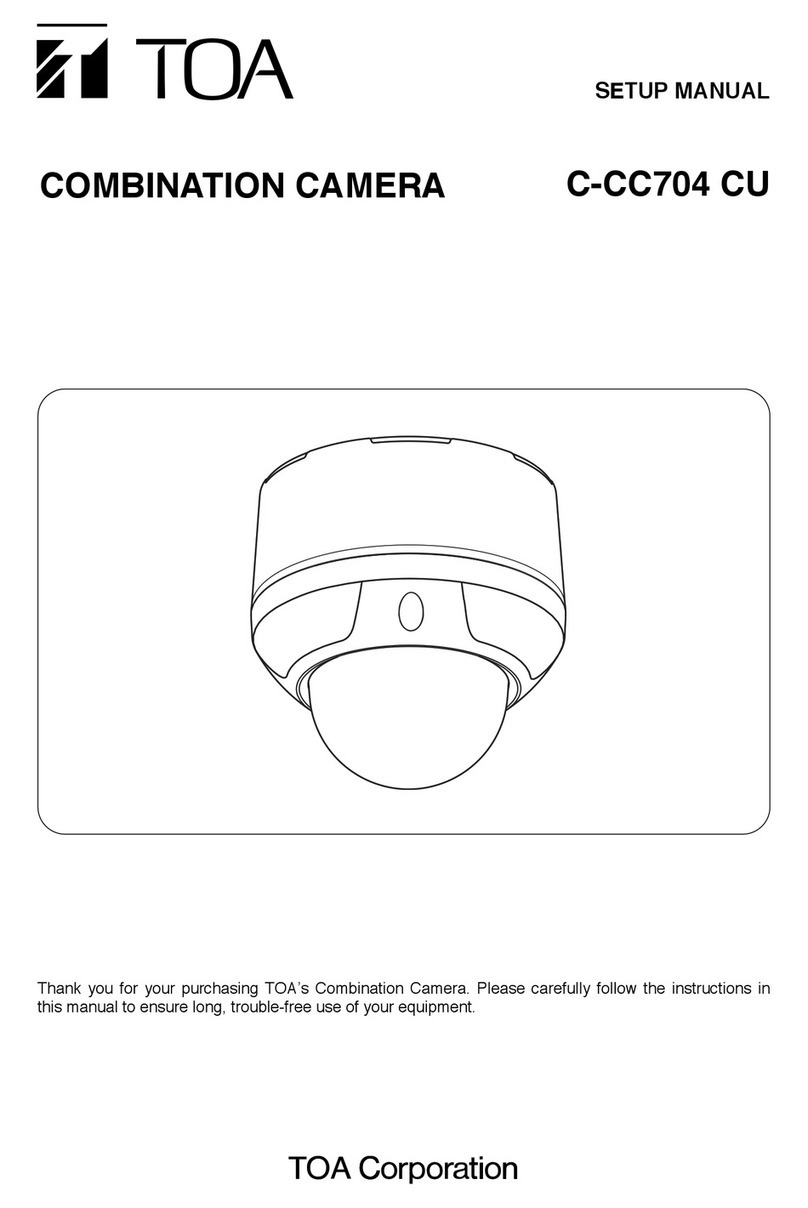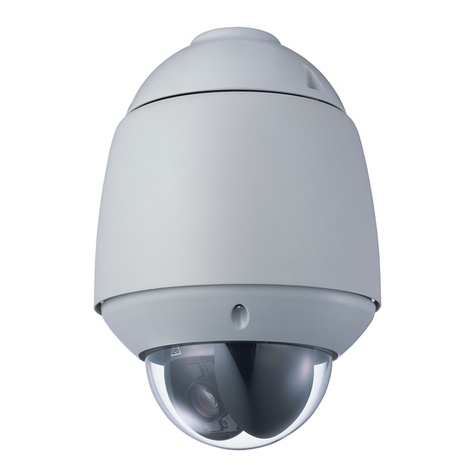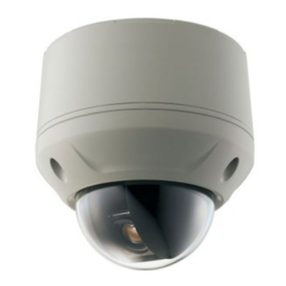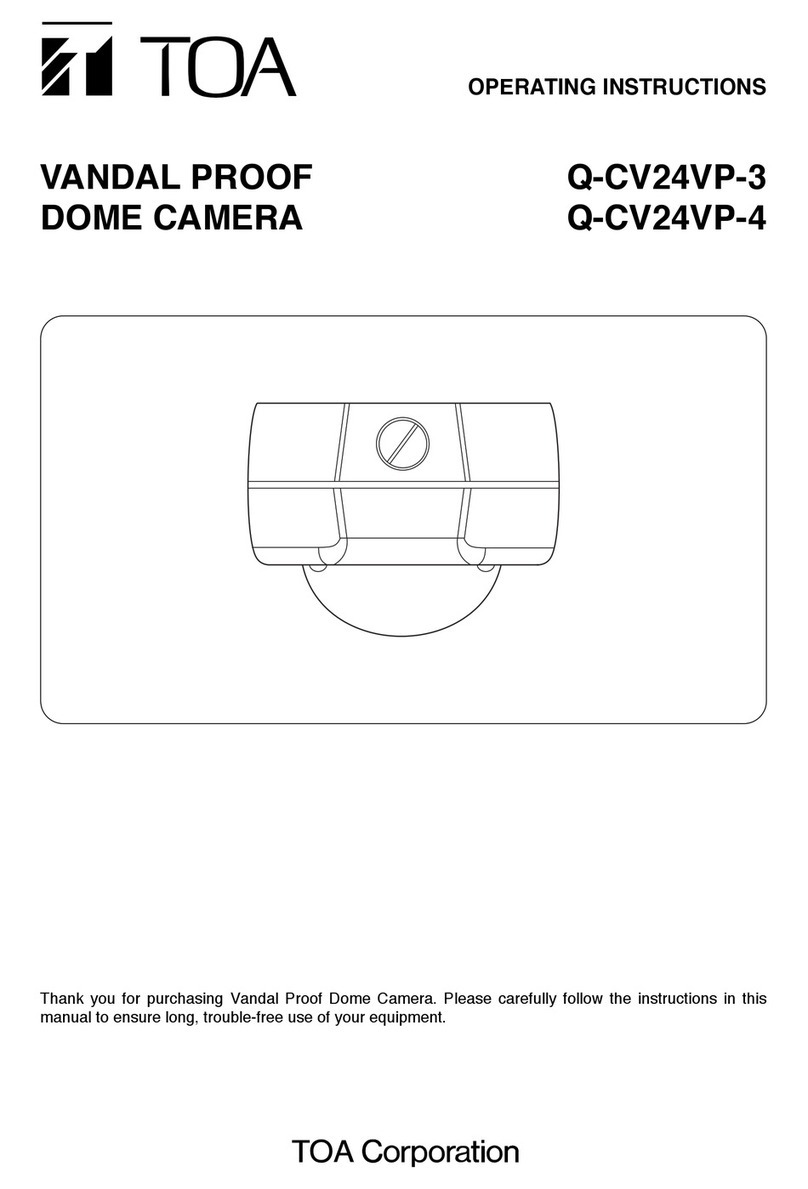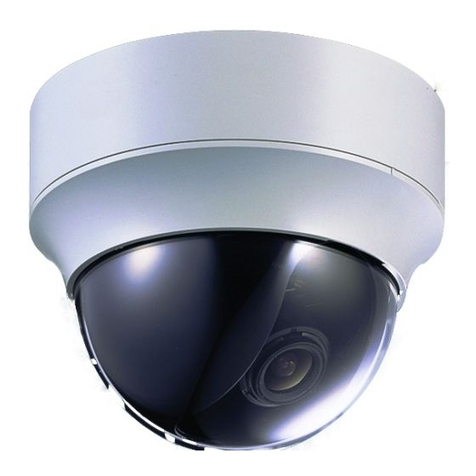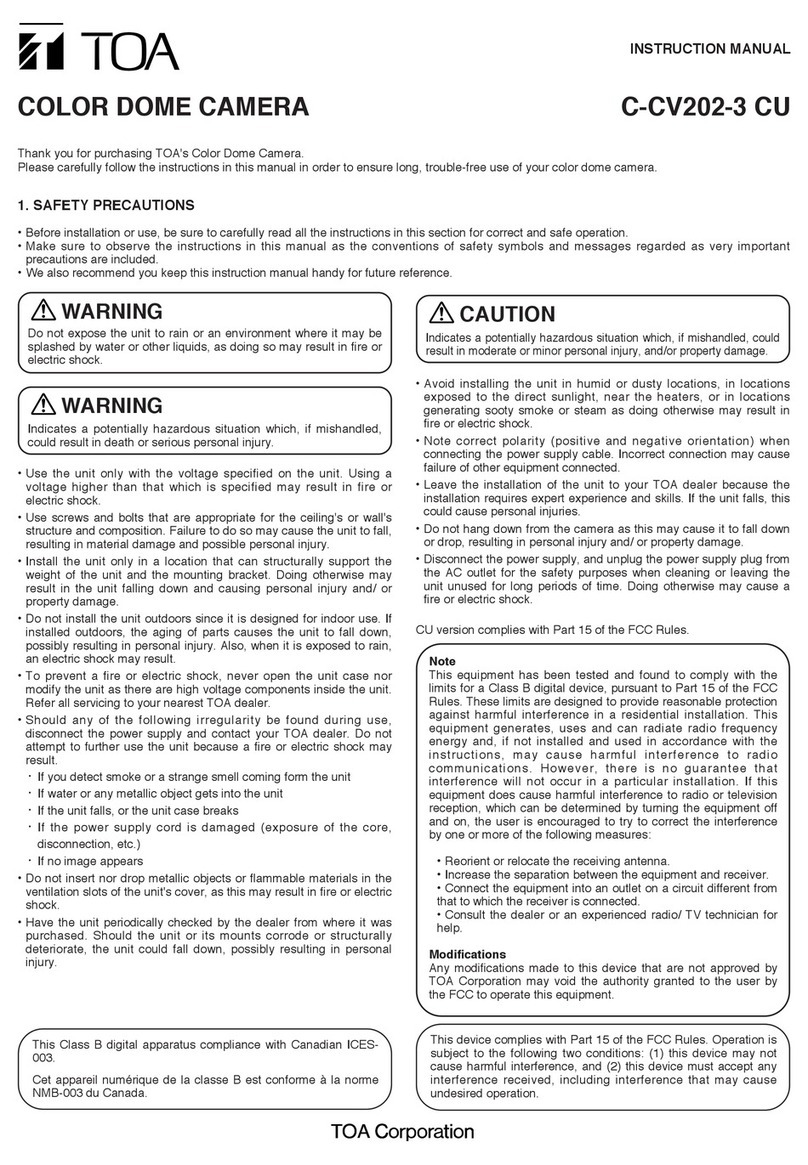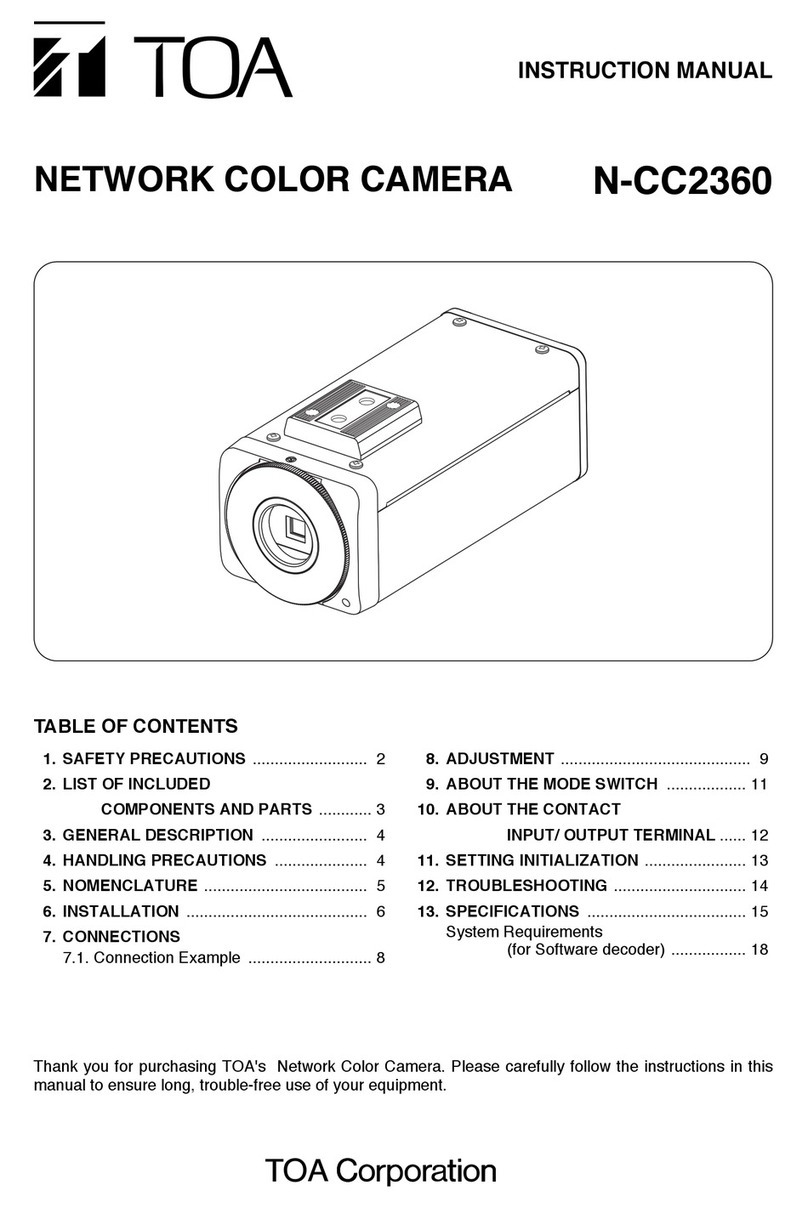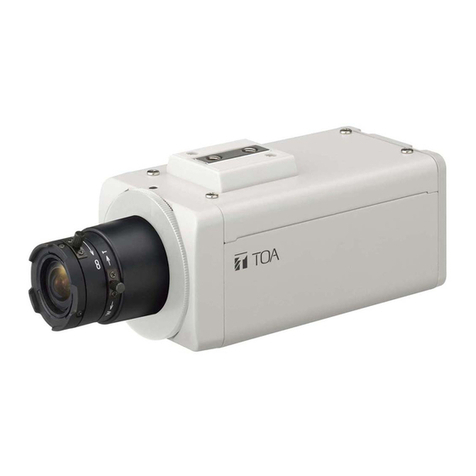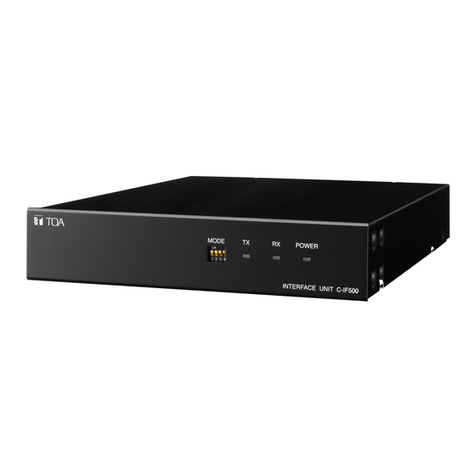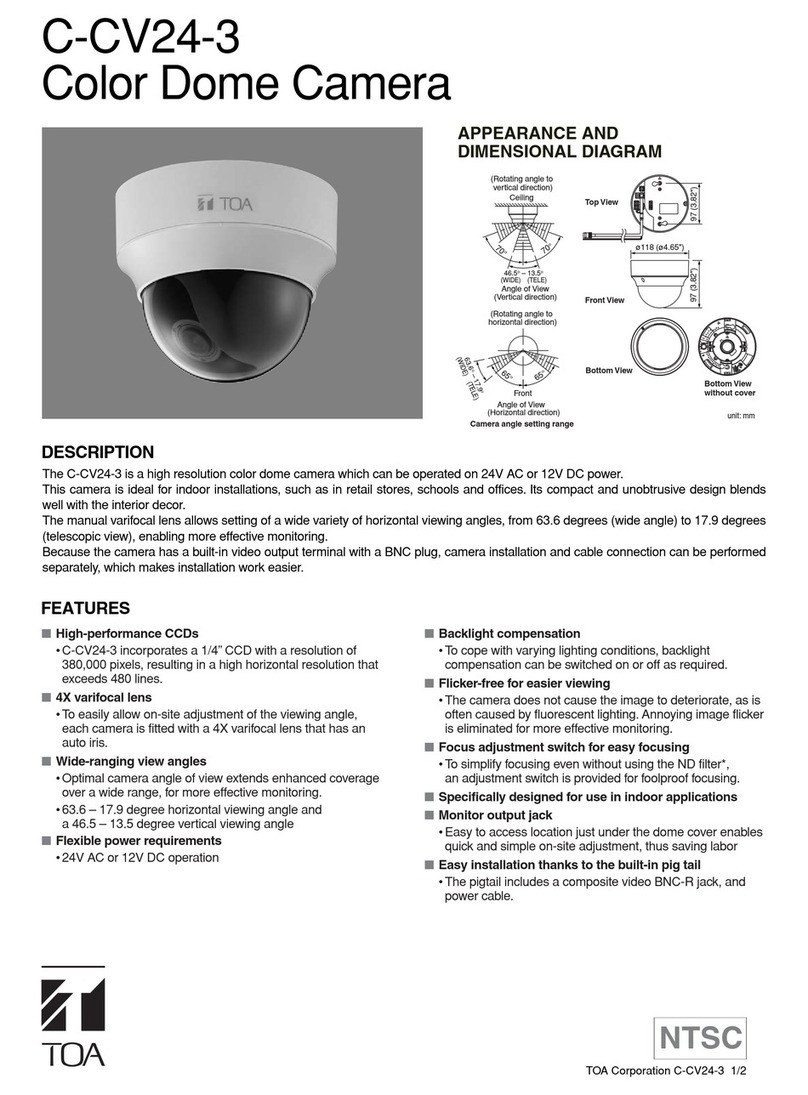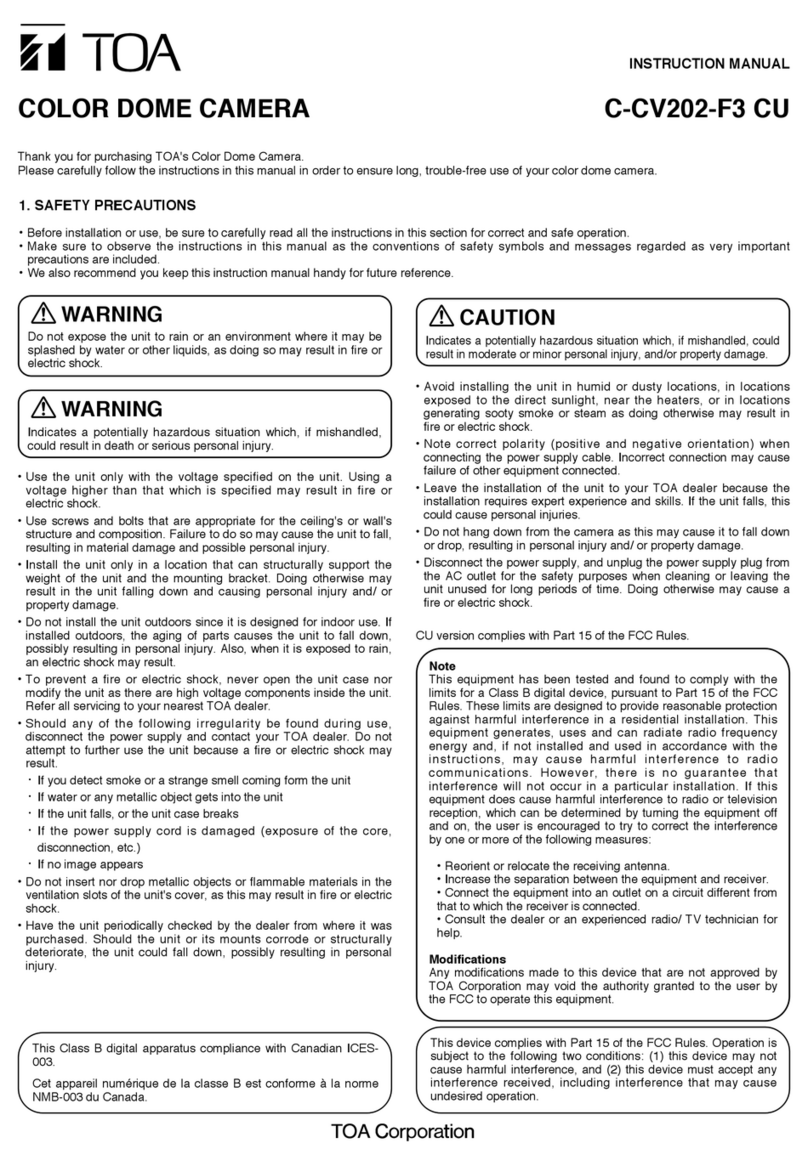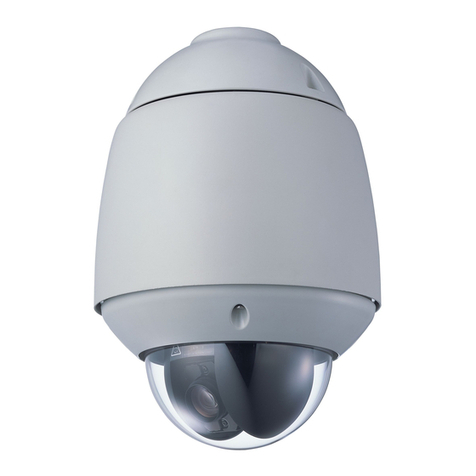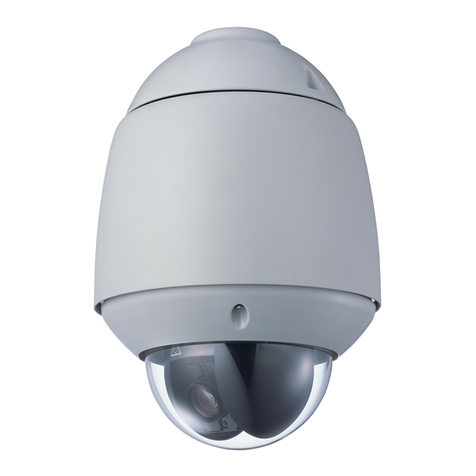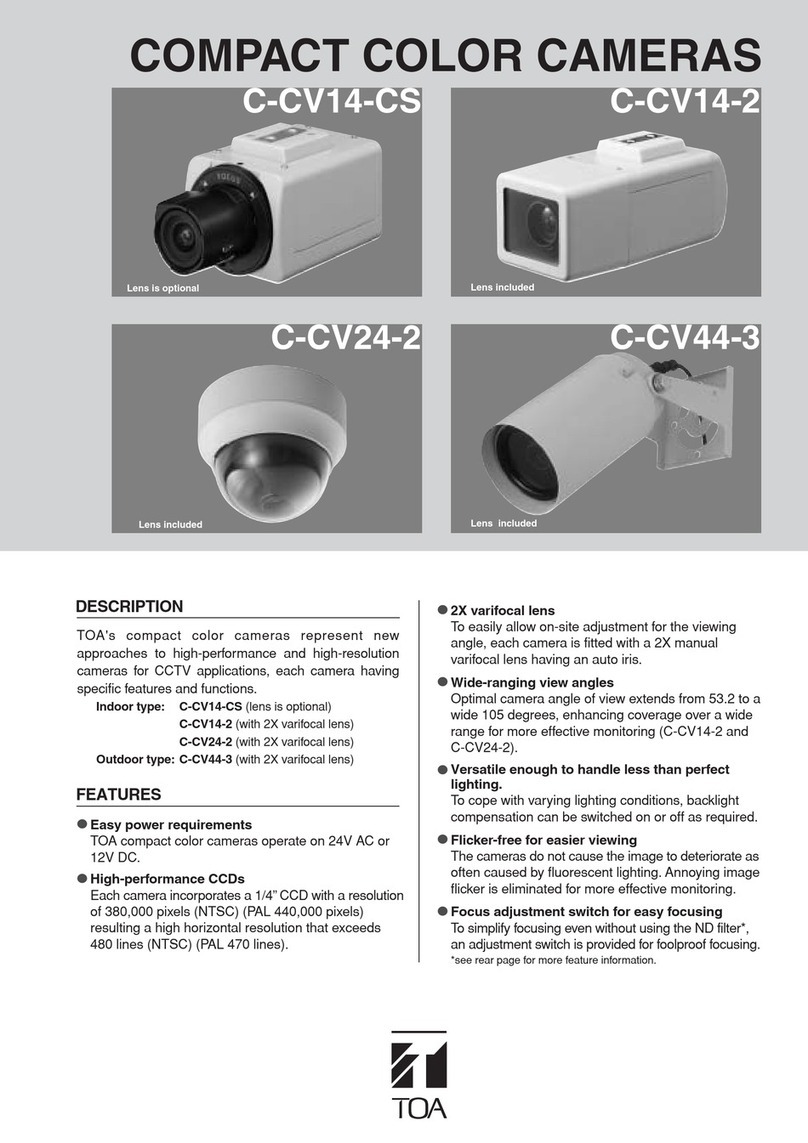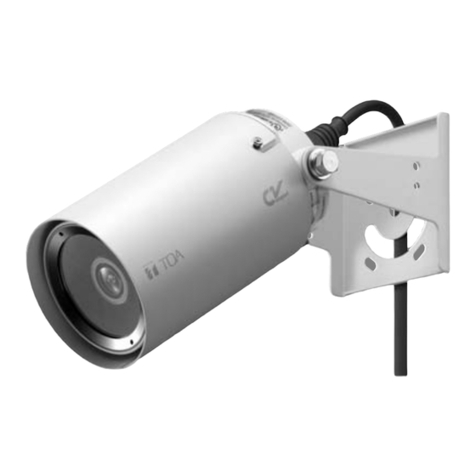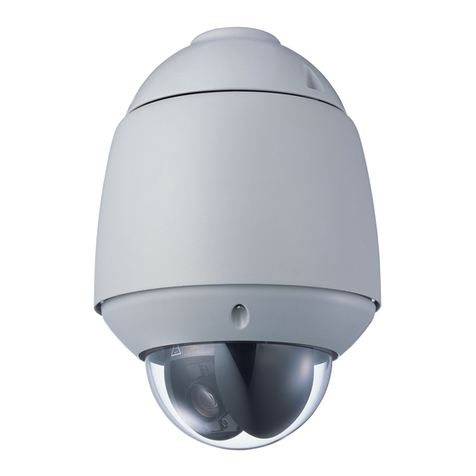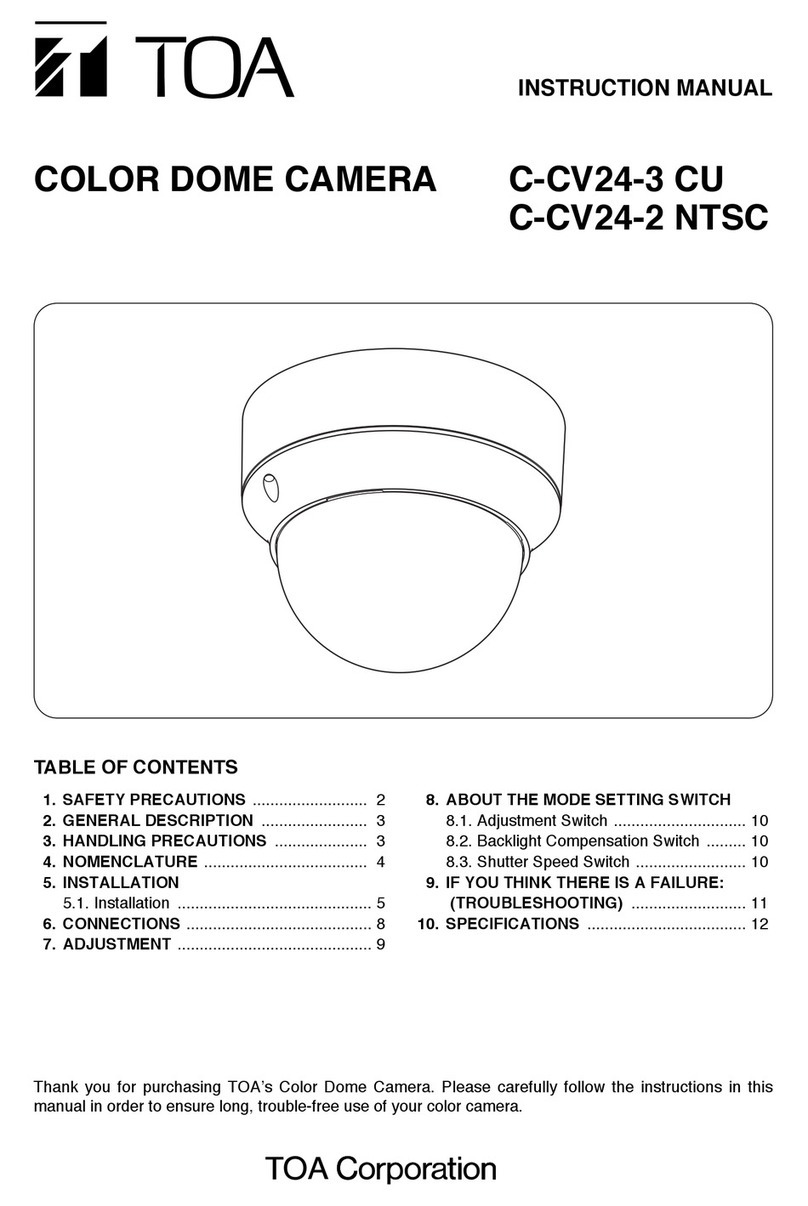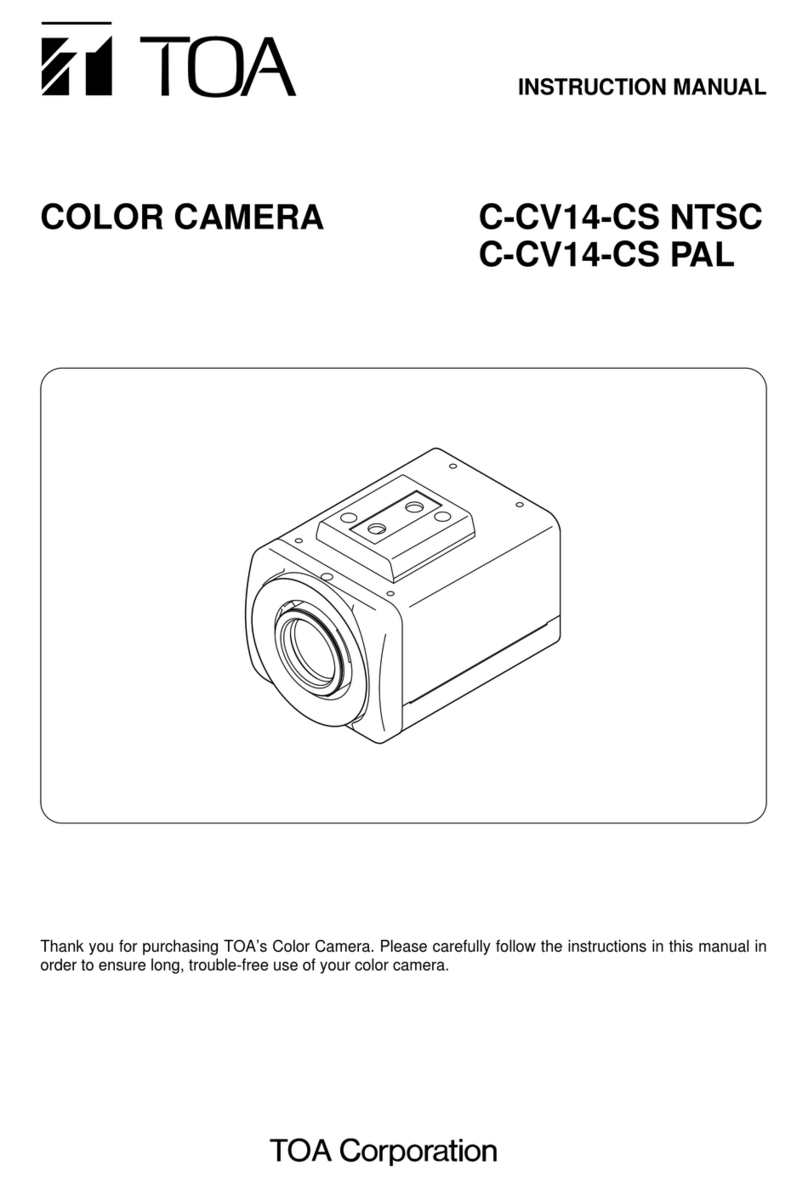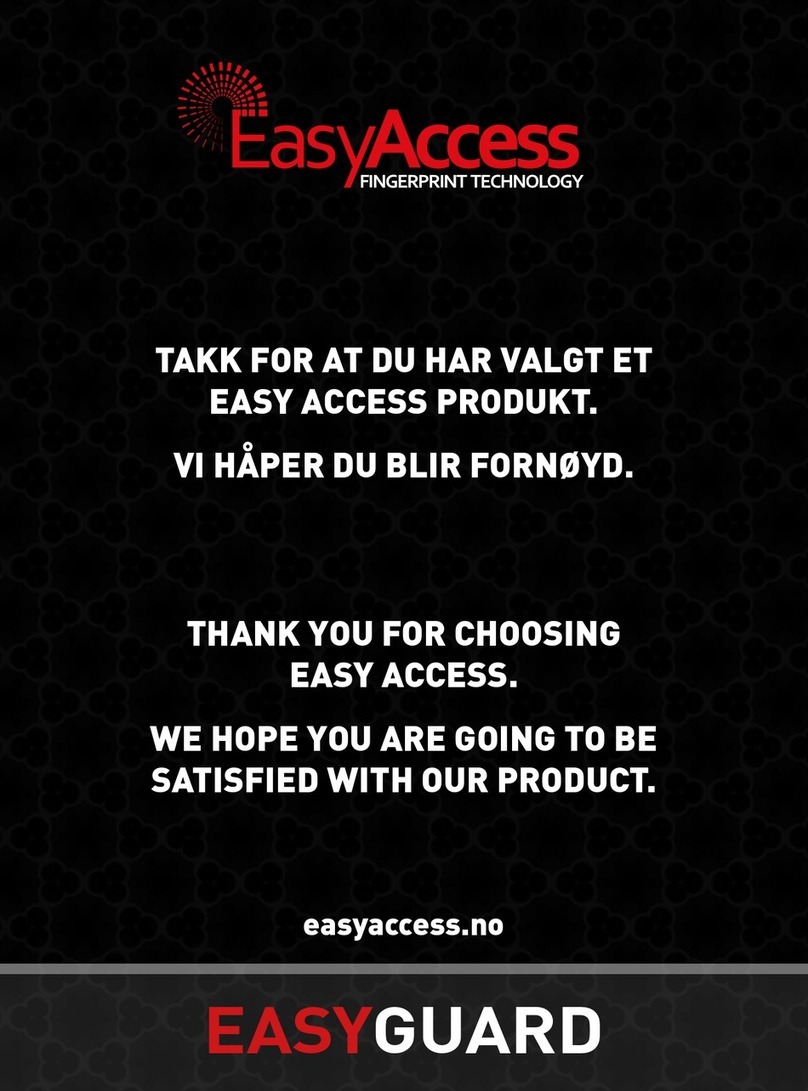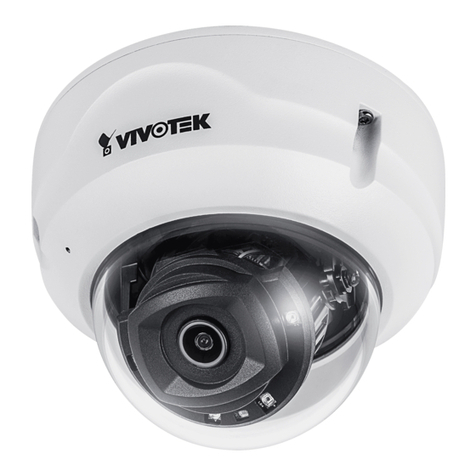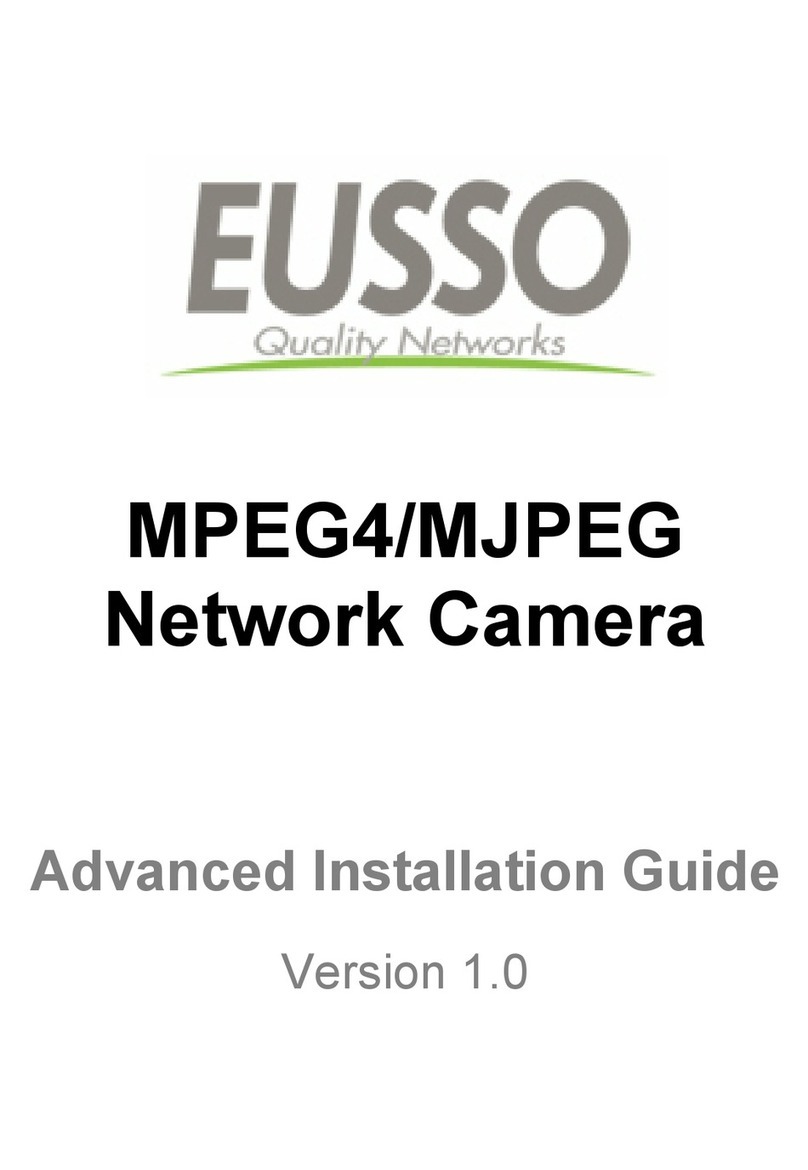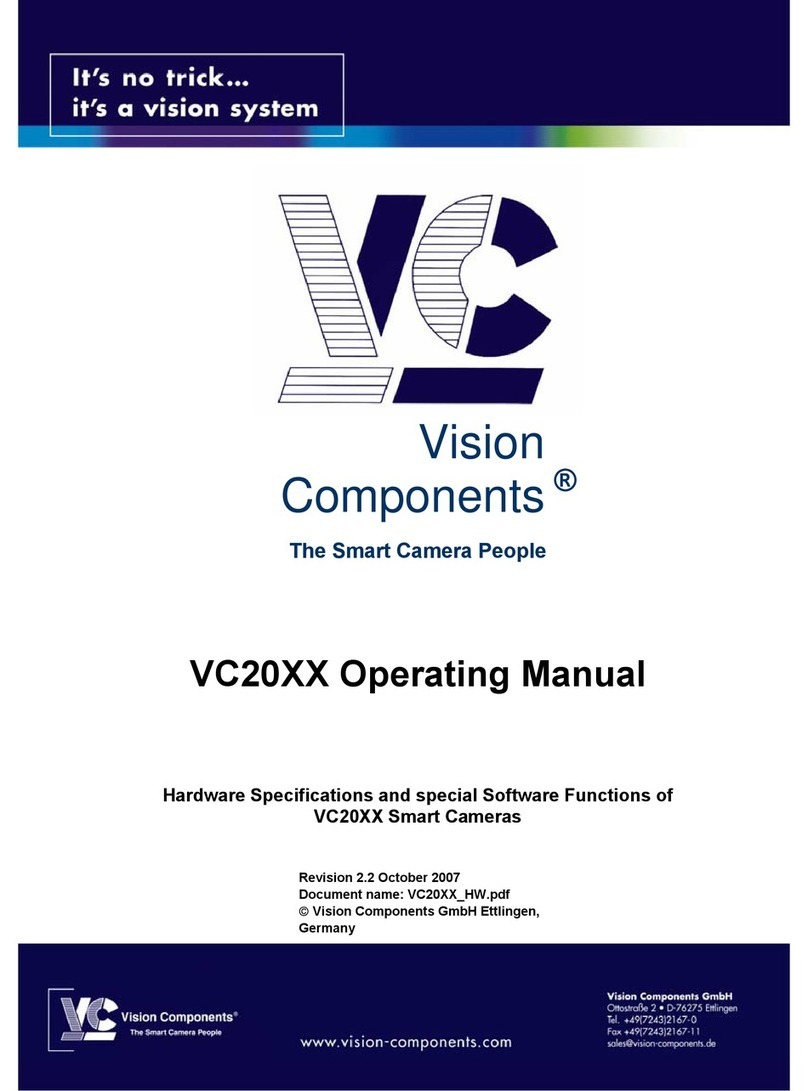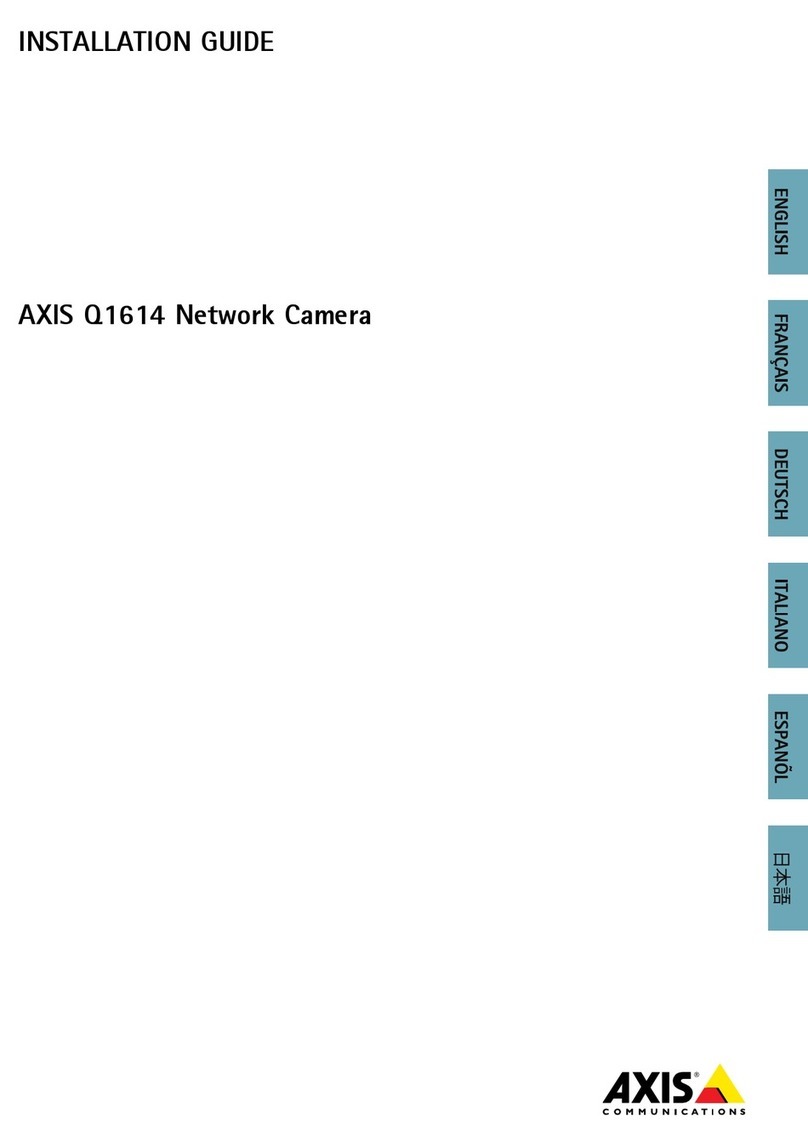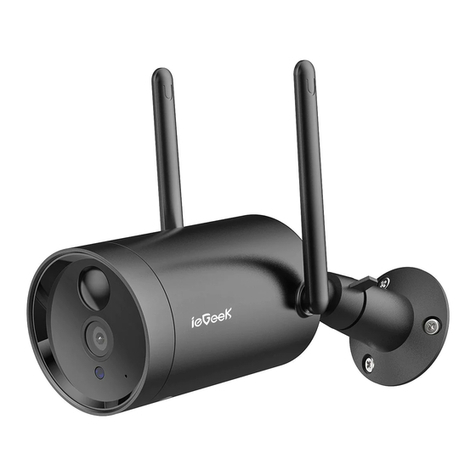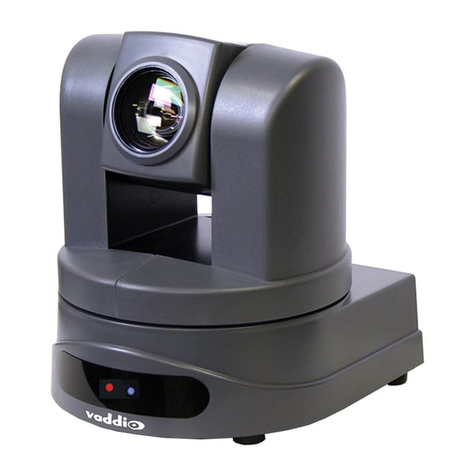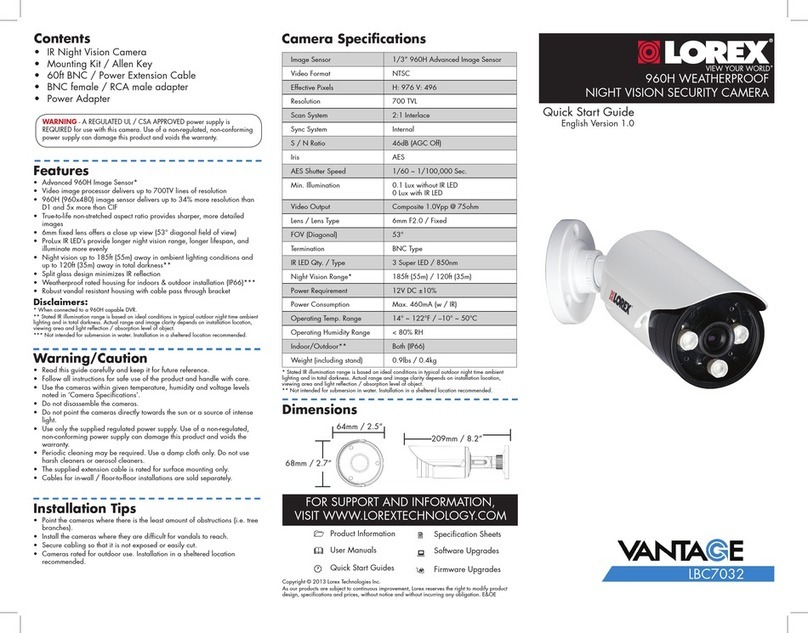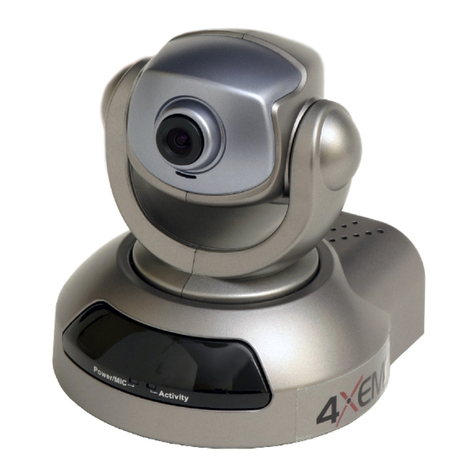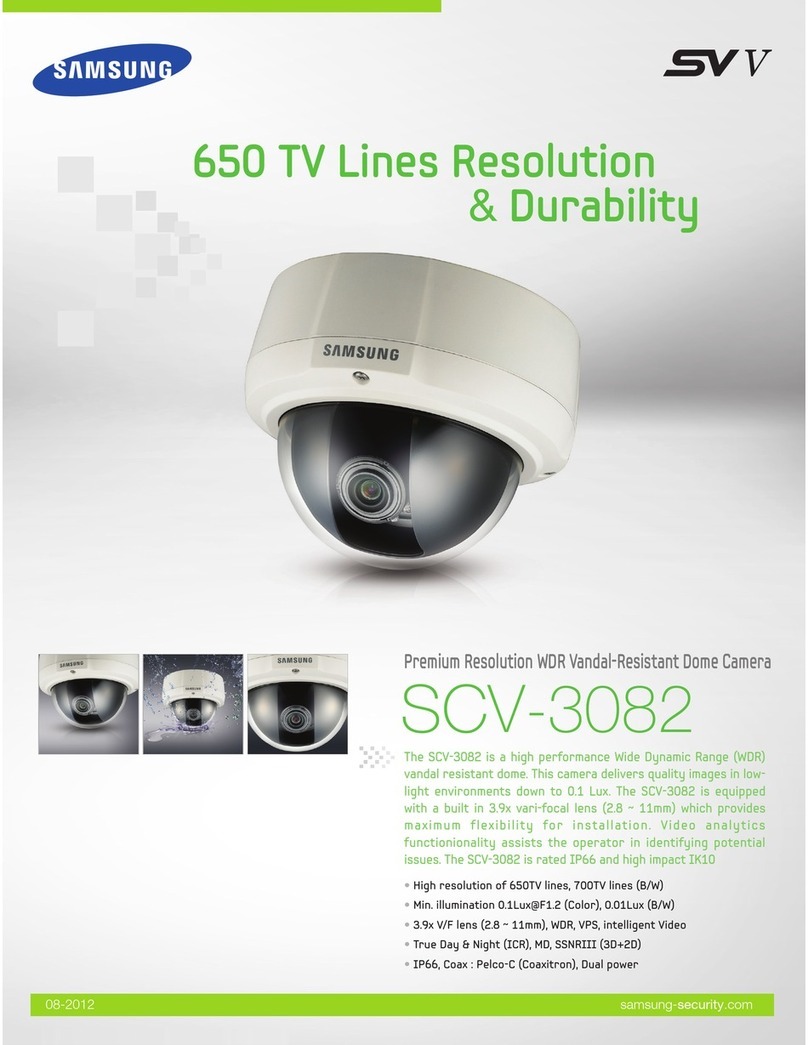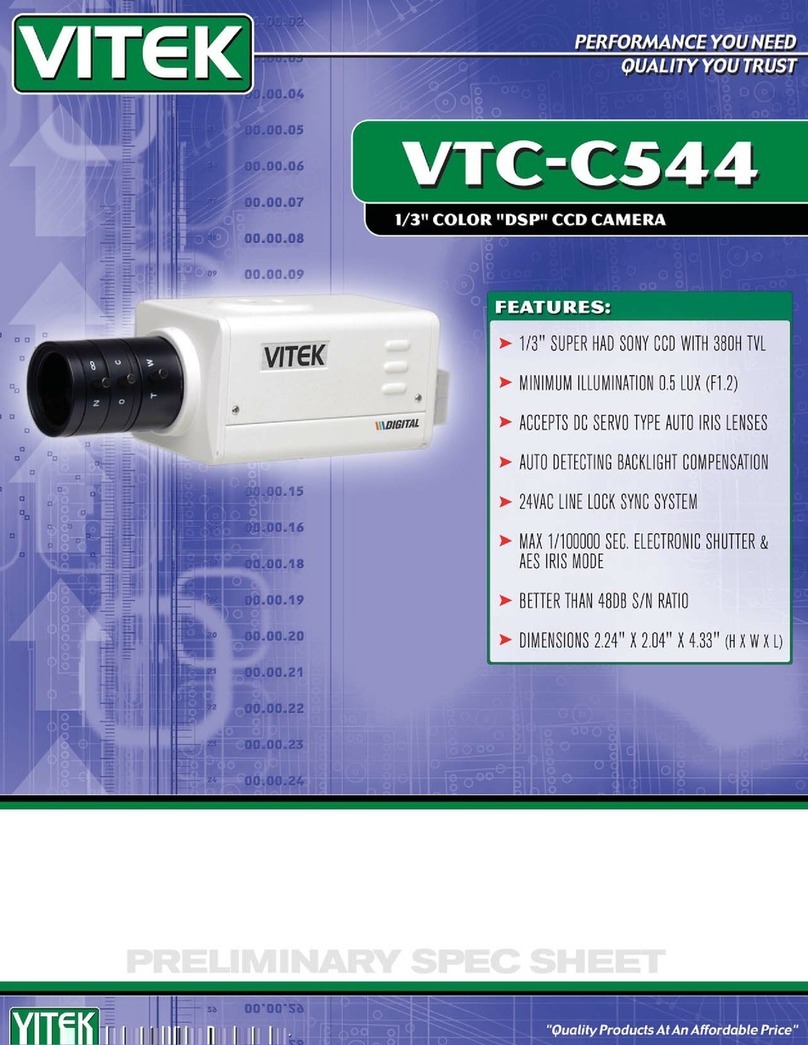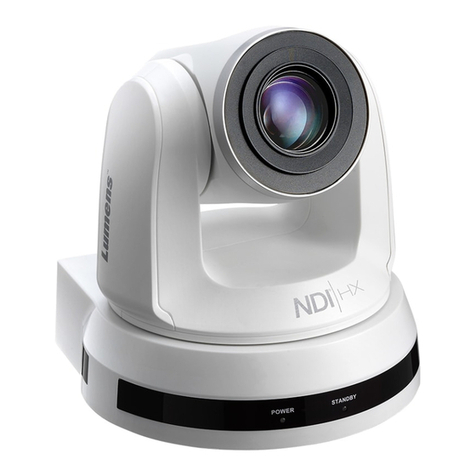3
1. SAFETY PRECAUTIONS
•Be sure to read the instructions in this section carefully before use.
•Make sure to observe the instructions in this manual as the conventions of safety symbols and messages
regarded as very important precautions are included.
•We also recommend you keep this instruction manual handy for future reference.
Safety Symbol and Message Conventions
Safety symbols and messages described below are used in this manual to prevent bodily injury and property
damage which could result from mishandling. Before operating your product, read this manual first so you are
thoroughly aware of the potential safety hazards as well as understand the safety symbols and messages.
■When Installing the Unit
•Install the unit only in a location that can
structurally support the weight of the unit and the
mounting bracket. Doing otherwise may result in
the unit falling down and causing personal injury
and/or property damage.
•Ensure all screws are tightened. The unit may fall
off if insufficiently secured, resulting in possible
personal injury.
•To prevent lightning strikes, install the unit at least
five meters away from a lightning rod, and yet
within the protective range (angle of 45 degrees) of
the lightning conductor. Lightning strikes may
cause a fire, electric shock or personal injury.
■When Installing the Unit
•To prevent fires, electric shock, personal injury or
damage to property, refer all repairs to the dealer
from whom the unit was purchased. Installation
also requires extensive technical knowledge and
experience.
•Avoid installing the unit in locations exposed to sea
breezes or corrosive gas. Mounts may become
corroded, eventually causing the unit to fall off,
which could result in personal injury.
•Take care when handling the sharp edges of the
metal case, as injuries to the hand could result.
•Have the unit periodically inspected by the dealer.
If screws or other metal parts become excessively
rusty, the unit could fall off, potentially causing
personal injury.
•Keep the combustibles and wires as far as possible
from a heater (C-CH100FH only) because fires or
electric shock could result.
•To avoid burns, do not touch a heater (C-CH100FH
only).
■When the Unit is in Use
•Do not stand or sit on, nor hang down from the unit
as this may cause it to fall down or drop, resulting
in personal injury and/or property damage.
•Use the dedicated power supply unit CC-5941B for
the unit. Note that the use of other adaptor may
cause a fire.
•To prevent potential harm to fingers when closing
the housing cover, do not operate both stays
simultaneously. Instead, be sure to operate the
stays individually.
Indicates a potentially hazardous situation which, if mishandled, could
result in death or serious personal injury.
Indicates a potentially hazardous situation which, if mishandled, could
result in moderate or minor personal injury, and/or property damage.
WARNING
CAUTION
WARNING
CAUTION
